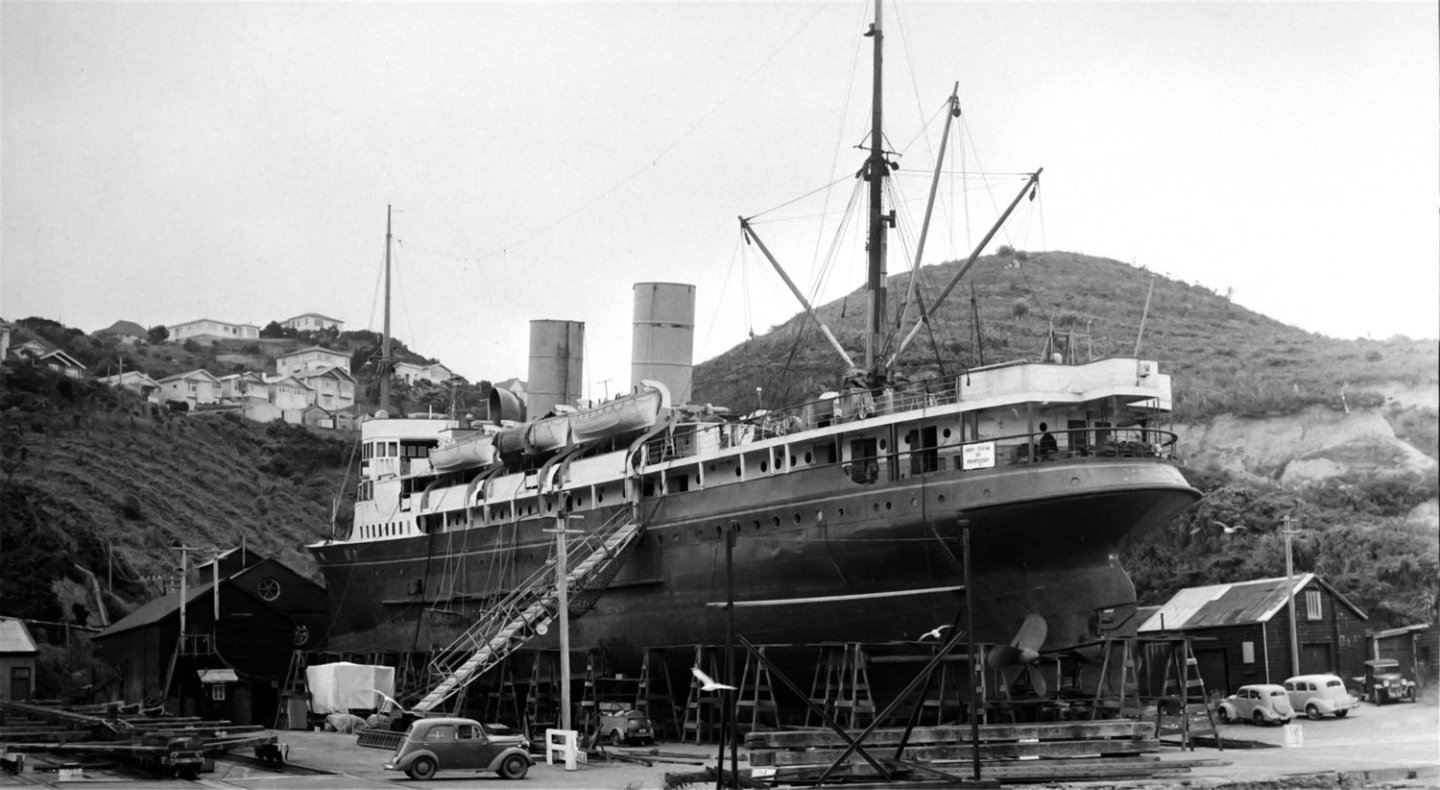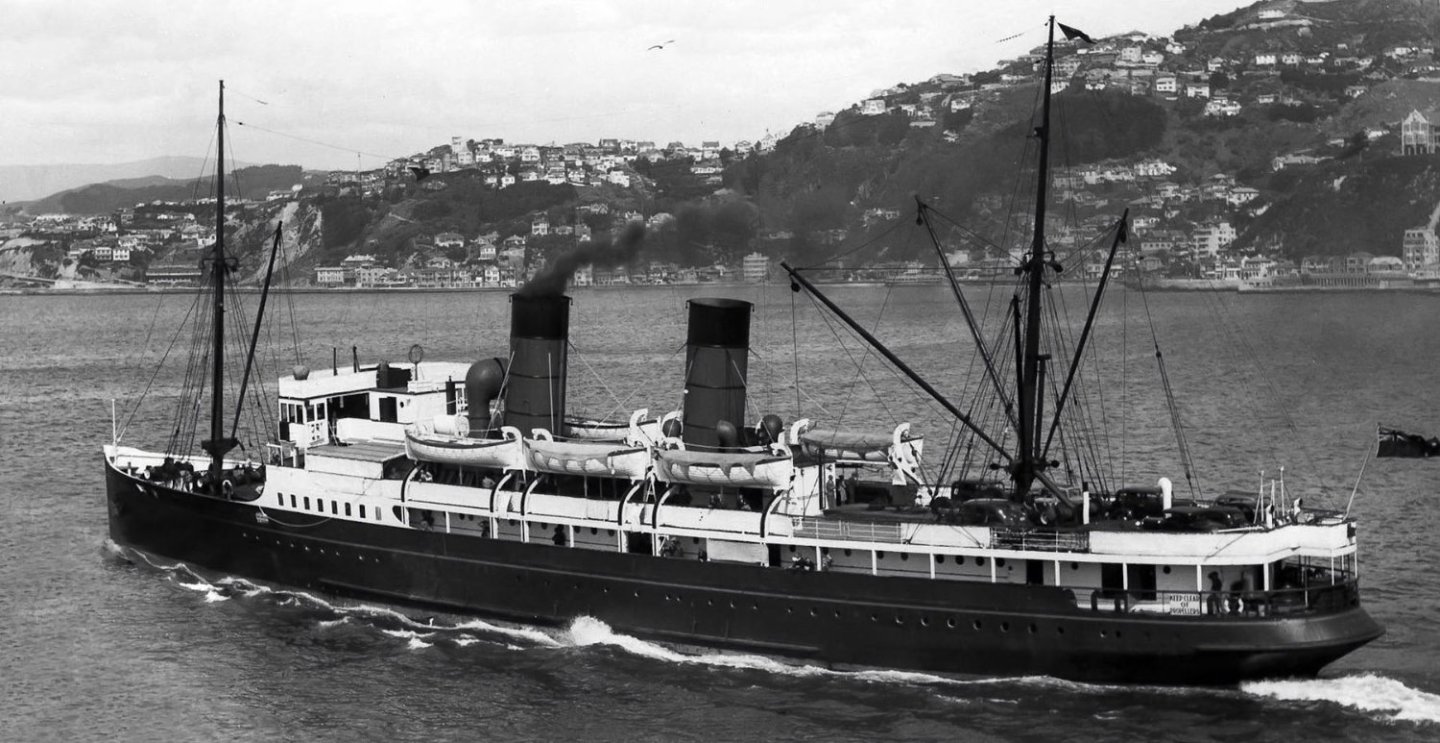
Lubber Line
-
Posts
9 -
Joined
-
Last visited
Content Type
Profiles
Forums
Gallery
Events
Posts posted by Lubber Line
-
-
On 6/12/2022 at 1:23 PM, Richard Dunn said:
She had both Bow and Stern thrusters, plus bow rudder, I never asked about it but I assume due to the very windy nature of her home port and very dangerous water she operated on.
I do know the bow rudder was virtually never used.Her replacement the TEV Rangatira was built with 2 bow thrusters and no Bow rudder.
Richard the faster the ship goes astern, the less effective a tunnel thruster is and the more effective a bow rudder is. The captain would be spoilt for choice… at low speed use the thruster, at higher speed use the rudder.
-
I'm not an experienced modeller. Could someone explain how the sliding fitting on the Upright white measurement board is used?
-
-
I love what you’ve done to make the model more historically accurate. I have the kit and some of the things you have chosen to alter were things I was contemplating. I don’t have access to the plans so I must ask: did Endurance have any scuppers on the main deck or freeing ports at the lower edge of the bulwarks? The design of bulwarks on the kit don’t seem to be accurate, as the lack of scuppers would have caused the main deck to fill up with water unless it could drain away freely.
Also a minor quibble with the kit: they show the ship flying the white ensign of the Royal Navy. Endurance was privately owned by Shackleton and registered in London; she would have flown the red ensign.
-
Good to hear that he saw your model and I’m sure he appreciated the project it would become.
I collaborated with some of his book writing research and articles. I would love to see Murray’s website professionally curated and managed. It is still up, but for how long I don’t know. Not sure if you saw any or not but Murray’s profile paintings of USSCo and other glamour ships were fantastic.
-
-
7 hours ago, Roger Pellett said:
Up here on the Great Lakes most ports are tiny as they are located at the mouths of small rivers that drain relatively flat landscapes. Prior to adoption of bow thrusters two techniques were used for turning long ships in confined spaces.
The first was pivoting on a dropped anchor. The SS Badger built in c1950 as a cross lake railroad car ferry now carries passengers and their cars across Lake Michigan. Upon arrival at Ludington, Michigan she was still using this technique in 2007, the last time that we crossed the lake aboard her.
The second was “winding.” To include the most volume and displacement into hulls of restricted dimensions, Great Lakes bulk carriers were built with plumb bows. In ports with improved harbors the vessel could be turned by pressing the bow against the side wall, putting the rudder hard over and using the thrust against the rudder from the screw to kick the stern around.
Today, all active Great Lakes cargo vessels are fitted with bow and often stern thrusters.
Roger
Thanks Roger. I’ve used anchors many times to turn in tight spaces and dredged anchors on a short length of cable into spaces when I didn’t have a tug or thruster, or if I needed to control speed and give myself something to drive against with the engine.
I’ve never done the pivot on the bow manoeuvre and most ships these days couldn’t since the near universal adoption of bulbous bows. However I was on a ship with a specially designed semicircular, strengthened, vertical plated ship that we used to do the same thing with in a river: back down a mile, come alongside and put out a big mooring line aft on a very strong bollard then keeping the stern on the berth allow the bow to come out into the flow. The ship would swing around 140 degrees then we would let go aft and steam away downstream to the bar. 120m long ship so nothing like those big lakers but a similar principle to what you saw done there.
- Roger Pellett, mtaylor, GrandpaPhil and 1 other
-
 4
4
-
Wonderful project and results. I’m a friend of the late Murray Robinson and he would have loved to see it. Keep up the good work and I look forward to some footage of her in the water.
Someone earlier asked a question about why the ship had both bow thruster and bow rudder. I can answer that: a rudder becomes increasingly effective as the water flow over it increases (like an aircraft wing). Importantly it has negligible effect when the water flows over it in the “wrong” direction (we are talking about ships here, not boats which will get some turning effect from rudder when moving astern) so a bow rudder is completely ineffective when the ship moves ahead (in fact most were mechanically locked so as not to be exposed to forces accidentally by a ship steaming on passage at full sea speed). So when manoeuvring astern at higher speeds the bow rudder would be used. A lateral thruster works whether moving ahead or astern but becomes increasingly ineffective as fore and aft speed increases, so when manoeuvring at lower speeds astern or when moving ahead or stopped in the water the thruster would be used. In Lyttelton Wahine and Maori used to turn to port outside the entrance to the inner harbour and back into 2 West berth. The bow rudder would have been very useful backing down on the linkspan at speeds of 5 or 6 knots. In Wellington they swung closer to the berth and had less distance to run astern. In that case the speeds would have been lower and the thruster more useful.



Endurance by MarcinPrzybys - OcCre - 1/70 scale - upgrade
in - Kit build logs for subjects built from 1901 - Present Day
Posted
Incredible workmanship on this build.
You’ve done an amazing job. Would you consider making the .stl files available for others to print their own upgrade components?